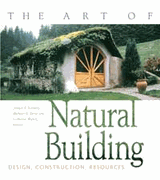
GEIGER RESEARCH INSTITUTE of SUSTAINABLE BUILDING
Home
About Us
What's New
Workshops
Certification
Training
Projects
Publications
House Plans
Image Galleries
SBE Directory
Resources
Consulting
Blog
Links
Contact Us
FREE Straw Bale Emergency Shelter Plans
Builders Without Borders Straw-Bale Construction Guides
The Last Straw -
The International Journal of Straw Bale and Natural Building
- Promoting natural building, and sustainable design and development, through research, training, education and consulting services.
- Encourage solutions that are based on local needs and resources. Emphasize local control, community building, collaboration, self-empowerment, and sustainable grassroots solutions.
- Involve the whole community in the design and building process: men, women, children, young and old can work together in a way that is reminiscent of traditional barn raisings. Construction sites can be joyous places filled with singing, ceremonies, picnics and other festivities.
- Encourage vernacular architecture and traditional building methods. Discover what is important to the local community and then design and build houses that people really like.
- People-centered building: houses should be designed for the way people really live within their culture. Include input from women who speak from experience about what makes a good home.
- Collaborate with other groups such as the Geiger Research Institute for technical assistance and educational materials, local universities for training and other resources, VISTA volunteers, youth groups, etc.
- Team approach: the construction process can be broken down into major steps (foundation, walls, roof, plastering, etc.). Each crew learns one skill for maximum efficiency and after completion of a certain number of hours each worker receives their own home. The most competent leaders help create a DNA-like self-replicating process that leads to other housing projects.
- Hands-on learning: utilize experiential learning, service learning and real-world experience, instead of abstract, theoretical approaches.
- Self-build housing: owner-builders build their own houses instead of relying on contractors.
- Utilize existing skills as much as possible. Some new skills may be required, but avoid unnecessary and sudden changes.
- Workshops: once the local population is trained and experienced, they can charge for workshops. This includes training those who wish to learn natural building and community groups looking for service learning and cultural exchange projects. This creates an ongoing source of funding and labor, and helps spread sustainable building concepts.
- Cottage industries: create local jobs with sustainable logging, milling, truss manufacturing, contracting, supplying local materials (clay, stone, straw, etc.).
- Create a local economy through building houses for each other (the tendency is to look for ‘real jobs’ somewhere else).
- Build more than just houses. Create peaceful, thriving communities built with love and care that meet all basic human needs for everyone who lives there.
Building Technologies:
- Utilize locally available, low-cost natural materials: use straw, earth, stone, sustainable wood supplies, recycled materials, etc., instead of highly processed, energy-intensive manufactured materials that are shipped long distances.
- KISS (Keep It Simple and Small): keep the design small and simple so that everyone can afford a home. The simplest homes are usually one story structures that avoid complex roof lines, skylights, dormers, and complex shapes and angles.
- Energy efficient design: straw-bale construction, for example, provides super insulation that greatly reduces long-term energy costs and almost eliminates the need for heating and cooling.
- Permaculture principles: this can include rainwater catchment, composting (including composting toilets), sheet mulching, organic gardening, xeriscaping, forest gardening and more.
- Appropriate technology: this can include solar ovens, mass heaters, solar water heaters and distillers. Consider all human needs such as cooking, water supply, waste disposal, etc.
- Passive solar energy: orient buildings along an east-west axis; use proper placement of windows (additional windows on the south, fewer if any on the west, etc.); use proper overhangs that allow penetration of the winter sun but block the hot summer sun; design for natural daylighting to minimize artificial lighting.
- Utilize low tech solutions such as rubble trench foundations, earthbag or stone foundations, straw-bale construction, cob furniture, straw-clay, pumice instead of rigid foam insulation, cellulose or cotton instead of fiberglass, adobe floors instead of concrete, lime or earth plaster instead of cement stucco, minimally processed local wood instead of milled lumber.
- Incorporate the latest natural building methods and techniques such as pinning straw bale walls with external pins of bamboo, saplings, reeds, etc.
- Use a ‘good hat and good shoes’: all buildings should have a good foundation and a good roof that protects the rest of the structure.
- Create safe construction sites: minimize use of power tools and limit their use to those who are qualified. Use solid ladders and include basic safety training to everyone who participates.
Role of the Geiger Research Institute of Sustainable Development:
- Design and technical assistance
- Leading hands-on workshops
- Educational materials
GEIGER RESEARCH INSTITUTE OF SUSTAINABLE BUILDING
Crestone, Colorado 81131 Email: Contact Information

